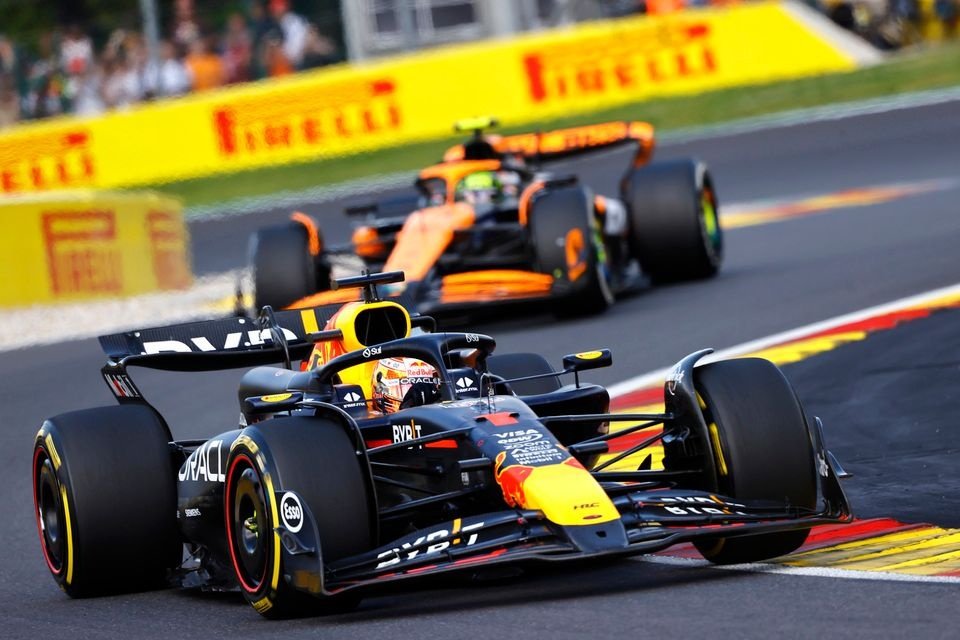Pirelli, the official tire supplier for Formula 1, has made some exciting announcements regarding the tire compounds that will be utilized in the upcoming races leading up to the summer break. These changes are particularly noteworthy for the British and Belgian Grands Prix, as they mark a departure from the previous year’s tire selections.
For the races at the Red Bull Ring and Hungaroring, Pirelli will retain the same tire compounds that were used in the previous season. This means that teams will have access to the C3, C4, and C5 compounds, which correspond to the hard, medium, and soft categories, respectively. However, the tire selection for Silverstone will be a bit softer this year, featuring the C2, C3, and C4 compounds. This decision comes with considerable risks, especially considering the historical context of tire failures at Silverstone in 2013 and 2020, which led to significant changes in tire specifications.
The upcoming Silverstone race will test teams’ abilities to manage the medium compound effectively. Historically, the medium compound has functioned as a soft tire for the past two seasons. Pirelli’s statement emphasizes the challenges that drivers will face in navigating the high-speed corners of the Silverstone circuit, which are known for demanding performance from both the drivers and their vehicles.
On the other hand, the tire compound selection for the iconic Spa-Francorchamps circuit is particularly intriguing. After observing that early-season races typically unfolded as one-stop races under dry conditions, Pirelli has considered introducing a gap between the selected compounds. For the Belgian Grand Prix, teams will again have access to the C3 and C4 compounds for medium and soft options, but the hard tire will be a C1 instead of the C2 that was used in the previous year. This change aims to create a more pronounced performance difference between the hard and medium tires, thus complicating strategy choices for the teams.
The implications of this new tire selection are significant. Teams opting for the hard tire with the intention of completing a one-stop strategy will now need to assess the performance gap between the C1 and the C2, which was last season’s hard tire. This added complexity is expected to make the race more unpredictable, particularly since the Belgian Grand Prix also features a sprint event. The introduction of a compound “step” during a sprint weekend adds a layer of strategic challenge, as teams must consider various factors when deciding on their tire choices.
Pirelli’s motorsport manager, Mario Isola, highlighted the strategic implications of these tire choices during an event weekend. He noted that teams typically find ways to optimize their strategies for a one-stop race. However, Pirelli isn’t necessarily trying to push teams toward a two-stop strategy for the sake of excitement or unpredictability. Instead, the goal is to create a scenario where the choice between one and two stops is not straightforward.
The rationale behind making the hard compound more resilient is that it could potentially lead to slower one-stop races. Drivers might be able to push the hard tire more aggressively, but it would still be slower compared to a competitor employing a soft-medium-medium two-stop strategy. This necessitates careful simulations based on performance data gathered from the early races to ensure that the differences between the tire compounds align with a clear performance window.
If the difference between the hard and medium tires is too minimal, teams may default to a one-stop race. Conversely, if the gap is too large, a one-stop strategy becomes unfeasible. Thus, the Belgian Grand Prix weekend will effectively serve as a practical test of Pirelli’s theory regarding tire performance and strategy.
As the season progresses, fans and teams alike will be keenly observing how these tire selections impact race strategies and outcomes. The changes introduced for Silverstone and Spa-Francorchamps not only add excitement to the calendar but also challenge teams to innovate and adapt their strategies in real-time. With the potential for more variability in race outcomes, the upcoming races promise to be thrilling spectacles for motorsport enthusiasts around the world.
In summary, Pirelli’s announcement regarding tire compounds for the British and Belgian Grands Prix introduces significant changes that will undoubtedly influence race strategies. The move to softer compounds at Silverstone and the introduction of a more challenging hard tire for Spa-Francorchamps are designed to enhance competition and unpredictability on the track. With teams needing to navigate these new dynamics, the upcoming races are set to be more exciting than ever before.
